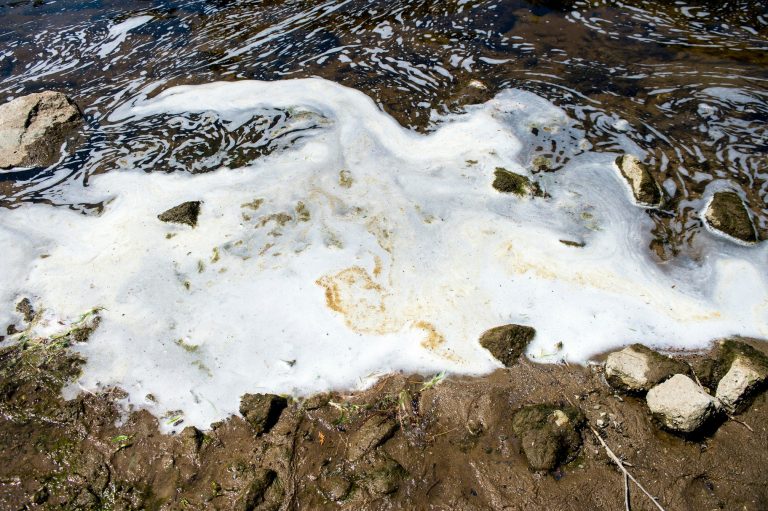Trump promises to veto a bill banning the military from using toxic products with PFAS
By Emily Moon | Pacific Standard | July 11, 2019

Read full article by Emily Moon (Pacific Standard)
“President Donald Trump threatened to veto a defense spending bill with an amendment that restricts the use of a toxic chemical compound found in firefighting foams on Tuesday. Several provisions in the bill, introduced in the House of Representatives this month, would require the United States Department of Defense (DOD) to switch to safer foams without per- and poly-fluoroalkyl substances (PFAS), which have been linked to birth defects and an increased risk of cancer. The bill would also require the military to pay to clean up sites where its activities have contaminated the water, including farms and watersheds, and classify the areas as Superfund sites.
The White House’s Office of Budget and Management said in a statement that the president would likely veto the National Defense Authorization Act if it includes limitations on PFAS, or to border wall funding and presidential authority under national emergency declarations, among other provisions. ‘At potentially great cost to and significant impact on DOD’s mission, the legislation singles out DOD, only one contributor to this national issue,’ the president’s advisers wrote.
The administration says these requirements place too great a burden on the DOD, arguing that the military is not the main offender when it comes PFAS use—a claim that many advocates, environmental groups, and lawmakers dispute.
In the 1960s, the military pioneered the use of the firefighting foam, which was then adopted in the commercial sector—even though officials expressed safety concerns as soon as 1974, the Intercept reports. It wasn’t until 2018 that the Pentagon released a list of PFAS-contaminated bases.
A recent analysis from the non-profit Environmental Working Group found that, of the more than 700 contaminated locations in 49 states, at least 117 were military bases. Other sources include industrial plants that produced the chemicals, wastewater treatment facilities, military firefighter training areas, and civilian airports.The EWG authors argue the military can claim responsibility for some of these other sites as well: Until 2018, airports, for example, were required to use foams that meet military specifications—meaning fluorinated foams—until the Federal Aviation Administration revised this mandate over health concerns last year…
On a call with reporters Wednesday, Senator Tom Udall (D–New Mexico), said, ‘They [members of the Trump administration] are claiming in that statement that the DOD and the Air Force is a small part of the problem. This is flat out wrong. DOD is a large part of the problem. They use these firefighting foams over and over’…
Environmental advocates say the DOD has been negligent about warning the public about the risks. ‘The military has known since at least the 1970s that fluorinated firefighting foams last in the environment forever and pose serious risks, and yet continued to put military families and then neighbors of military installations at risk,’ says Scott Faber, senior vice president for government affairs at the Environmental Working Group…
The Environmental Protection Agency and FDA have both been slow to address the problem: So far, the EPA has only set health advisory levels for PFAS, which are non-enforceable, leaving lawmakers without a way to force agencies to comply.
Faber says the next step is to mandate cleaning under the Clean Water Act. But first, the Senate will need a veto-proof majority for the defense act.
With debate on the provisions expected this week, Udall is holding out hope. ‘PFAS contamination is being turned up at hundreds of sites across the U.S.,’ he says. ‘There should be overwhelming support to overturn a veto.'”
This content provided by the PFAS Project.
Location:
Topics: